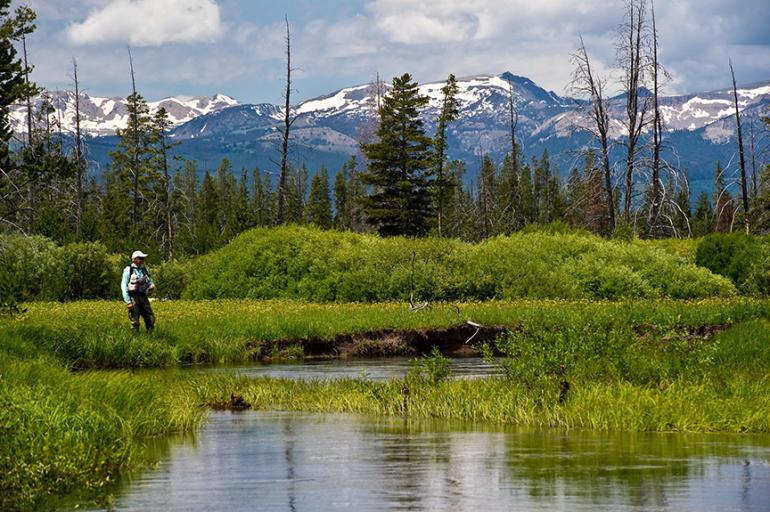Treat Your River Right
Catch this! Over a quarter of the state’s angling occurs here in Region 3 with seven premier wild trout streams, more than 90 fishing access sites (FAS), and some splendid high-mountain lakes. As the peak of fishing season draws near, here are some things to keep in mind.
Treat the resource like it’s yours… because it is. Montana’s fish and the rivers in which they swim belong to everyone. The best angling days happen thanks to healthy fish populations and the fishermen who exhibit good river etiquette. So we ask that you stay aware of those around you and be considerate. Pulling into a FAS? Don’t crowd the boat ramp and don’t litter. Help keep relationships going smoothly on the river by keeping your voice down, knowing your possession limits, and staying beneath the high-water mark. Finally, keep aquatic nuisance species at bay by remembering these three words: inspect, clean, and dry.
Madison River recreation planning. Speaking of river health and etiquette, Montana FWP is in the process of developing a recreation plan for the Madison River based on the recommendations of a citizens’ advisory committee, first convened in the spring of 2012. The reason? The Madison has seen the highest use of all rivers in the state over the last several years. Montana FWP wants to make sure it continues to provide a quality experience for anglers, floaters, and other river users. The committee’s recommendations focused on establishing desired conditions for specific stretches of the river, collecting data, while creating goals for education and suggesting guidelines to reduce issues like congestion and litter.
Stream Access Law: What does it mean? Montana’s Stream Access law is one of the most progressive laws in the country when it comes to recreational use of a public resource. It reads, “all surface waters that are capable of recreational use may be so used without regard to the ownership of the land underlying the waters.” The law is based on cooperation and mutual respect between recreationists and landowners. The law also says the public must stay below the ordinary high-water mark. The high-water mark is the line created by water after covering riverbanks for significant amounts of time during high-water periods. The law does not allow trespassing, but does allow for portage (even on private property) should that recreational use as stated above be blocked by some sort of manmade obstruction.
Andrea Jones is the FWP Region 3 Information and Education Program Manager.












